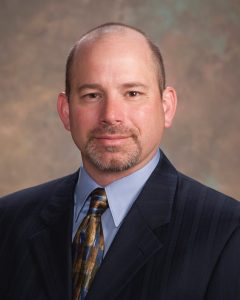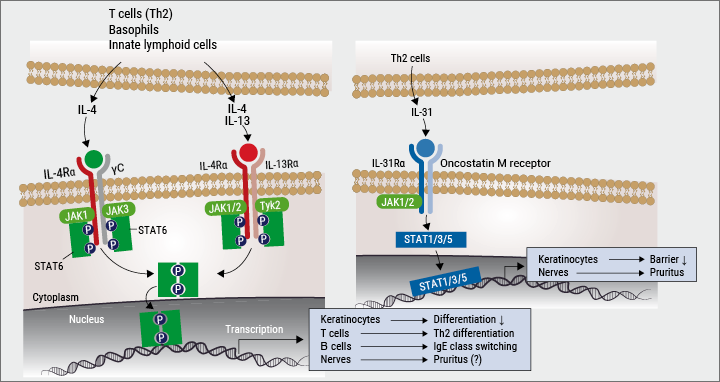
What are the highlights from AAD 2018?
Dr Stratman: “First of all, it is very exciting that we have one of the largest groups of registrants ever, with physicians from every state in the US and over 99 other countries. As for the highlights, we are surely living in the golden age of psoriasis therapies. There is a large number of new psoriasis drugs and as dermatologists want to learn about new therapies, that is certainly one of the hot areas. Furthermore, new therapies for very severe atopic dermatitis (AD) are being discussed. There are also some practice management topics dermatologists have to face; for example, access to drugs which are becoming incredibly expensive over the last five to ten years. We have to ask why they have to be so expensive and what can we do to get access to those therapies for our patients. The “hot topics in dermatology” are also very popular as this session looks at new developments in a variety of different areas like drug therapy, disease management, diagnosis and basic science. Those are always very exciting because we learn not only about what’s ready for practice today but what’s coming down the pipeline. In addition, the well-being of dermatologists is discussed as we are facing increasing rates of burnout amongst our colleagues.”
Can dermatology stay affordable in view of all these new medications?
“I think we are living in a very important time, where we are having more and more conversations about the value of care. But value isn’t just the costs but also quality of life gained. We know that there are many studies that show that we may sometimes be undertreating our patients with severe skin disease due to ignorance about options of therapy and, sometimes, due to a bit of discomfort in prescribing medicines that are somewhat more aggressive. But what we know is that many of these new drugs have an incredibly good rate of clearance and so patients are experiencing a dramatic improvement in quality of life. That’s a big part of what’s in the numerator of the value equation as it is: quality of life over costs. If you can impact the quality of life, you may end up keeping the patient out of the dermatology office or even the hospital: and both can also be very expensive.”
How should we select the right treatment for the individual patient?
“I am sure that there is some variability across the globe on how that happens but, in most places in the US, insurance companies that are usually the ones paying for medicines or helping the patient pay for the medicines often want you to go through a step ladder approach with the more expensive drugs being more high up. So, most of the time we do start with frontline therapy that may have been around a little while longer. Many of the more expensive therapies are second-line. In my opinion, the great news is that we have so many options. Even if we go through the therapies that are lower on the ladder, if they don’t work there are many more choices, and I think this variety of choices is what will help drive the prices down. It is just the market forces of drugs sales.”
What is your wish for future AAD meetings?
“My idea of a meeting is one where physicians leave the meeting and immediately have an impact in how they practice medicine. There are many, many studies that show that if you attend a meeting not doing anything but sit in a seat and listen to lectures, this won’t change much or anything that you will do at home in your practice. But what we need to be impacting with our education is: what are we doing and, also, what are we overdoing or underdoing and therefore should be doing differently? So, I’d like sessions that are more hands-on, meaning a real chance for kinaesthetic practice — for example, learn a new technique. I would also like to see more high-fidelity simulation models, where you can learn to do a surgery here at the meeting or actually perform a laser procedure. These simulation models should help the attending physicians to train to be better in their clinical practice. We already have several of those sessions but I’d like to see them more and more. As I said, we can’t change practice in a traditional lecture setting. We have to improve audience engagement during the presentation in order to not have a passive audience. So, things like using audience response systems, where you have to click an answer or give an opinion, are both very powerful ways of engaging the audience, getting their mind to think. Learning with case-based scenarios also helps all clinicians to do a better job when they go back to practice. They will see a similar case and the learning that has been done here will click in their mind.”
Posted on
Previous Article
« Improvement in impact of genital psoriasis on sexual activity with use of ixekizumab Next Article
Better gastrointestinal tolerability with biologics than the conventional therapy »
« Improvement in impact of genital psoriasis on sexual activity with use of ixekizumab Next Article
Better gastrointestinal tolerability with biologics than the conventional therapy »
Table of Contents: AAD 2018
Featured articles
Letter from The Editor
Living in the golden age of psoriasis and atopic dermatitis therapies
Late-breakers
IL-17C inhibition in AD and new oral treatments
Dual JAK/SYK inhibitor and anti-IL-33 blockade
Psoriasis: Selective IL-23 blocker, analysis of VOYAGE-2, dual IL-17 inhibitor and ustekinumab
Hyperhidrosis: Soft molecule and anticholinergic towelettes
Behcet’s syndrome and hidradenitis suppurativa
Psoriasis: an update
Oral therapeutics, supersaturation and excimer laser
Psoriasis management online?
What's hot in atopic dermatitis
AD sleep disturbance, antihistamines and osteoporosis
New topical and systematic treatments
Acne management
Winter effect and preventing scarring
Restrictive antibiotic use and novel tetracycline
Alopecia Areata
Melanoma
Melanoma incidence continues to rise in Europe
Lesions in paediatric patients and possible correlation with coffee drinking
CNNs and targeted combination therapy
Pearls of the posters
Improvement in impact of genital psoriasis on sexual activity with use of ixekizumab
Intralesional cryosurgery and itching in psoriasis
Related Articles

December 20, 2018
Oral therapeutics, supersaturation and excimer laser

December 20, 2018
New topical and systematic treatments
December 20, 2018
Melanoma incidence continues to rise in Europe
© 2024 Medicom Medical Publishers. All rights reserved. Terms and Conditions | Privacy Policy

